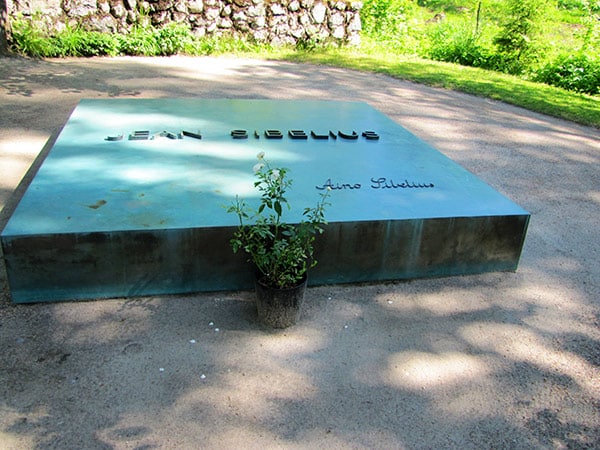By Shirley Jenkins
During the 2014 – 2015 season musicians throughout the world will be paying tribute to the music of Jean Sibelius to mark the 150th anniversary of his birth. This article takes a look at his life, his heritage, his nationalism and his remarkable music.
Johan Christian Julius (Jean) Sibelius was born in Hämeenlinna (Swedish-Tavastehus), Finland, on December 8, 1865 to Christian Gustaf Sibelius and Maria Charlotta Sibelius née Borg. Christian was City Medical Officer and physician to the Hämeenlinna Sniper Battalion. The Grand Duchy of Finland was a part of the Russian Empire at that time.
Johan was called “Janne” in memory of his father’s uncle, Johan “Janne” Sibelius. His uncle used the French form of Johan, Jean, on his business cards, so after finding some of his uncle’s business cards while a student, he did the same. Therefore he became known to posterity as Jean Sibelius.
He grew up speaking Swedish and learning Swedish folk melodies. Although he was fluent in Finnish and other languages, Swedish was spoken in his home throughout his life.
During his early years economic times were extremely difficult. His father died of typhoid fever in 1868 during a severe famine. The family lost their home and went to live with his mother’s mother, Katarina Borg née Haartman.
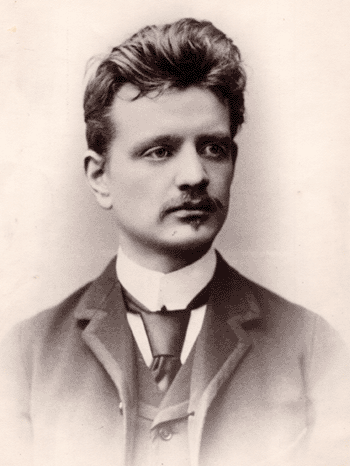
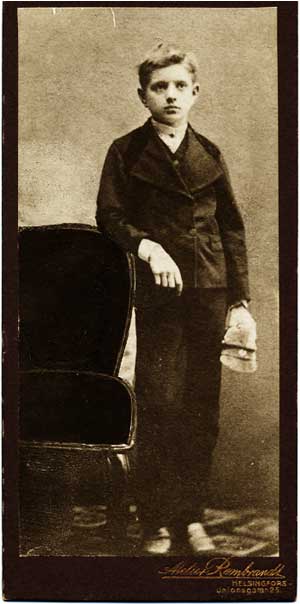
Although not considered to be a child prodigy, he had a vivid imagination. He loved to tell stories about fairies and fire. As a little boy he loved to lie under the square piano while his mother was playing and visualize the sounds intertwined with the stripes and colors of the traditional rag rug. His experiences with this out-of-tune piano had a profound effect on his music life. He told biographer Jussi Jalas, “When my songs were transposed (to a higher pitch) they became quite different. When I was a child we had a square piano which was about three-quarters tone flat. My whole world was contained in it, and when we got a new piano with normal tuning, everything was shattered. I felt alienated from the piano and began to move to the violin side.”
His aunt Julia, his first piano teacher, taught him to read music, but he was a restless student who preferred to improvise and criticize his aunt’s students. Sibelius played solo pieces and duets with his sister Linda, and later composed music for his sister, brother Christian and himself to play. He conducted from the piano.
Sibelius began to study the violin at age nine and by the age of fifteen was determined to be a great violin virtuoso. He performed on the violin throughout his life, but abandoned his dream at university. He said, “It was a very painful awakening when I had to admit I had begun my training for the exacting career of a virtuoso too late.”
He began student life at a Swedish preparatory school, but was a restless dreamer who was often put under his teacher’s desk. He preferred to think of melodies and stories. He said his grandmother became his teacher and under her instruction he studied Greek and Latin. He was taught Finnish so he could attend the excellent Hämeenlinnan Normaalilyseo secondary school which he attended 1876 – 1885, and where all the classes were taught in Finnish. While at the school he was introduced to the philosophy of Friedrich Hegel and National Romanticism. Those ideals became a crucial part of his artistic output and his political philosophy that remained throughout his life. He also became an avid reader who enjoyed the writing of Runeberg, the Finnish poet. While visiting Runeberg’s tomb he said he felt like Runeberg’s soul had flowed into him. He also loved reading the Finnish epic, the Kalevala.
His favorite childhood memories were of spending summers with his paternal grandmother, Katarina Fredrika Sibelius and his aunt Evelina Sibelius in Lovisa. Karl Ekman’s biography quotes him as saying, “Until I was fifteen, I was the great Nimrod. I could roam the forests and meadows for days on end.” Sibelius recollected that,”Lovisa was my sun and joy. Tavastehus was my school town. Lovisa was my freedom.” These experiences exploring the forests, meadows, lakes and sounds of nature were apparent in much of his music throughout life.
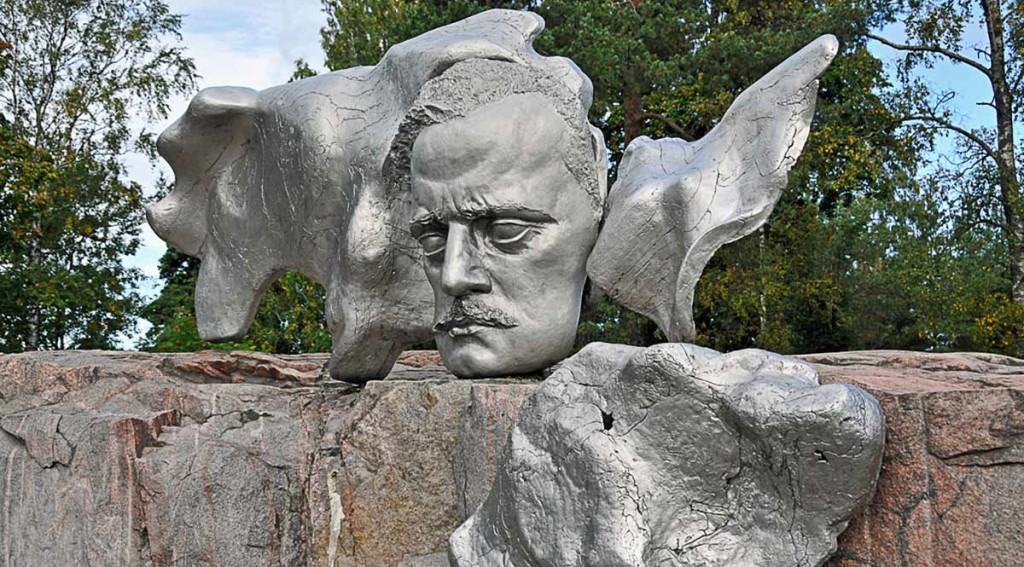
After completing high school in 1885 he and his mother and sister moved to Helsinki, where, to please his family, he began to study law at the Imperial Alexander University (later named University of Helsinki). He loved moving to the stimulating city. He had no interest in practicing law, so he followed his heart to the Helsinki Music Institute (Sibelius Academy) where he attended from 1885–89. Under Martin Wegelius he studied theory, counterpoint and harmony.
In 1886 he started to use his uncle Jean’s visiting cards and proclaimed to the world, ”Jean (Sibelius) is now my musical name.”

In 1892 Sibelius married Aino Järnefelt. Aino Järnefelt was born in Helsinki, into the family of General Alexander Järnefelt and his wife Elisabeth (née Clodt von Jürgensburg) in 1871. She had six older siblings, including the writer Arvid Järnefelt, the painter Eero Järnefelt and the composer and conductor Armas Järnefelt. The Järnefelt family was very influential in the Finnish National Romantic movement. It was her brother Armas who brought his friend and fellow student, Jean Sibelius, to the family home in the winter of 1889. At the time, the writer Juhani Aho, a frequent visitor to the Järnefelt home was expressing affection towards Aino, but he did not receive the response he sought. Within the next few years, Aino became engaged to Jean Sibelius, and they were married with her father’s blessing at Maxmo on 10 June 1892.
Aino and Jean had six daughters: Eva, Ruth, Kirsti, Katarina, Margareta, and Heidi. Kirsti’s death at an early age caused them to feel deep despair and sadness.
In 1903 they moved to their home, Ainola, which was located in the countryside next to beautiful Lake Tuusula in Järvenpää, north of Helsinki. He wanted a peaceful, beautiful place to compose. Aino and Jean wanted the children to learn to play the piano. However, they could not practice at home where their father needed peace and quiet for his composing. The children were sent to Tuusula friends and neighbors, the Halonens at Halosenniemi to practice the piano under the leadership of Mrs. Maija Halonen, an accomplished pianist. Pekka Halonen was already a renowned artist at that time.
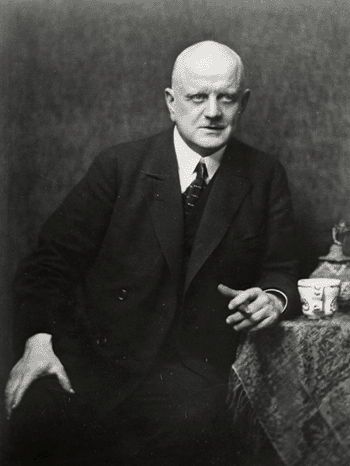
Beginning in 1907 Sibelius kept a diary. He said he often wrote things that he didn’t think would be acceptable to be spoken. When he went back and read them he discovered that while he suffered through the darkness of winter, he got his most creative ideas then, but actually brought them to fruition in the spring. He suffered bouts of dark moods and fought alcoholism that began with heavy partying during his student years. He also successfully overcame throat cancer.
In the spring of 1918, Finland was torn by civil war. The south of the country was controlled by the “Reds” who had a hard time controlling their “own”. Rogue elements used the opportunity to settle scores. Murders, unauthorized by the revolutionary leadership were common. The revolutionary leadership became concerned that bandits might hurt the composer family, which was the last thing they desired. Consequently they placed reliable armed “red” guards around Ainola to assure that the Sibelius family did not come to harm. The incidence illustrates the chaos in southern Finland in the spring of 1918.
In 1957 Jean Sibelius died of a brain hemorrhage and was buried at Ainola. His wife continued to live there until she passed away June 8, 1969.
Today Ainola is a museum, open to the public. Sibelius wrote a number of powerful, thoughtful, haunting and beautiful compositions. A discussion of his music will begin with Sibelius answering questions about his music, posed by Ivan Narodny, who, in 1914, was preparing to write an article for the publication “Musical America” about Sibelius as he was turning fifty.
“My first composition to be performed was “Variations for String Quartet,” which was played in Helsingfors (Helsinki) in 1887. It attracted considerable attention, which was a great encouragement for a beginner. In 1889 I left Finland to study in Berlin. Prof. Albert Becker instructed me there in composition and it was there I started my bigger orchestral works. In 1891 I went to Vienna and continued my studies with Karl Goldmark. I also studied with Albert Fuchs. Those are in brief the principal facts of my musical career.
It pleases me greatly to be called an artist of nature, for nature has been truly the book of books for me. The voices of nature are the voices of God, and if an artist can give a mere echo of them in his creations, he is fully rewarded for all his efforts.”
Jean Sibelius said he often wrote things in his diary that he didn’t think would be acceptable to be spoken.
Some of his important works were:
Kullervo (Op 7) 1891-1892 was a symphonic poem for soprano, baritone, male voice choir and orchestra. This is a one movement symphony, rather than the standard four movements. It has been described as his most remarkable compositional achievement.
Sibelius took the subject matter from the Kullervo saga, a tragedy in Kalevala.While many reviewers hated his new style of compositions and the audience laughed, Swedish speaking critic Karl Flodin praised the work with reservations: “Jean Sibelius has a tune of his own, it is a gift originating from great abilities and with it he writes his own, our own music.” According to Flodin, Kullervo’s modulations, rhythms and melodies had their origin in Finnish folk songs. With some reservations the Finnish-speaking composer and critic Oskar Merikanto said, “Sibelius had taken a long step forward with this work and, at the same time, taken Finnish arts towards a highly promising future… The whole composition is, due to its Finnish content, the most impressive and powerful work ever to come from a Finnish pen.”
Finlandia, Op. 26 (1900) is a symbol of Finland’s struggle for independence.Undoubtedly Sibelius’ most famous piece, it is a grand orchestral tone poem protesting against the Russian Empire’s stranglehold on Finland. The power of the music says it all. There are legends about his renaming it for somewhat undercover performances due to its nationalistic fervor.
Tapiola, Opus 112 (1926) was a tone poem commissioned by Walter Damrosch for the New York Symphony Society. Tapiola is the forest god of Finland. Sibelius provided the Society with this tone poem:
Widespread they stand the Northland’s dusky forests,
Ancient, mysterious, brooding savage dreams;
Within them dwells the Forest’s mighty god,
And wood-sprites in the gloom weave magic secrets.
He composed and published seven symphonies and attempted an eighth which he later burned in the fireplace at Ainola. Like Beethoven, he is said to have required each composition to change and further develop his musical style and use of structure.

Symphony No. 1 in E Minor, Op. 39 premiered in 1899 in Helsinki and was conducted by Sibelius himself. It cemented his position as the most important Finnish composer. On the surface it is a Romantic, Nationalistic and patriotic symphony which features a beautifully haunting clarinet solo that will remain with you for a long time. In this music we are easily able to visualize forests, mountains, swirling winds and sweeping snowy landscapes.
Symphony No. 2 in D Major, Op. 43, was completed in 1902 in the middle of strong Finnish Nationalistic struggles against Russia, and Finns were said to associate this with the music, but Sibelius disagreed. He said that he ”admired the symphony’s severity of style and the profound logic that created an inner connection between the motifs.”. He conducted the the premiere, but then revised it. Populists have nicknamed it “Symphony of Independence.”
Symphony No. 3 in C Major, Op. 52 coincided with his leaving Helsinki and moving his family to their new home, Ainola. He vowed to try to lessen his dependence on alcohol and regain his health. He now was shifting his thoughts away from the grand Romanticism associated with his Second Symphony and pursuing greater clarity and spaciousness. Between 1904 and 1907 he is said to have found the forthright, elemental sound that characterized his future compositions-music to match the stark beauty of Scandinavian landscapes. He was infusing the elegance of Mozart and Haydn into a modern language.
Symphony No. 4 in A Minor Op. 63, (1911) was once thought to be the strangest of his symphonies, but is now considered as one of his personal best. It is said to have a chamber-music like transparency, a mastery of counterpoint and a density of expression that were ahead of its time.
He used his experiences listening to strong mountain winds and roaring waterfalls among other things. After revising it, he said, “I wished to give my symphony another, more human form. More down to earth, more vivid.”
Symphony No. 5 in E Flat Op. 82 “A Song for Swans” premiered on his birthday in 1915 and in the same general time frame as Stravinsky’s Firebird (1910). This work showed a softening in attitude that allowed his work to be more a part of the world that embraces everything, not closed off as he once thought.
“I wished to give my symphony another, more human form. More down to earth, more vivid.”
Symphony No. 6 in D Minor Op. 104 (actually in the Dorian Mode) is loved for its mystical beauty and atmosphere, characteristics unlike most symphonies of the early 20th Century. It took him nearly ten years filled with many problems and periods of self-doubt to complete this work. It was begun in 1914 and first played in 1923.
Symphony No. 7 in C Major, Op. 105 (in one movement) was premiered in Stockholm in 1924 and conducted by Sibelius. Note that to write a symphony in one movement was unique in his time.
For the last thirty one years of his life he composed no major works. After his Seventh Symphony, a very self-critical Sibelius told his friends, “If I cannot write a better symphony than my Seventh, then it shall be my last.” He did compose music for his Masonic organization and other minor occasions.
As the world celebrates his 150th birthday, his love for Finland and for all the aspects of nature shine brightly for Finland and the entire world to enjoy through his beautiful and heartfelt music compositions.
A note to the readers: if you haven’t heard Sibelius’ music, much of it is available on YouTube.
